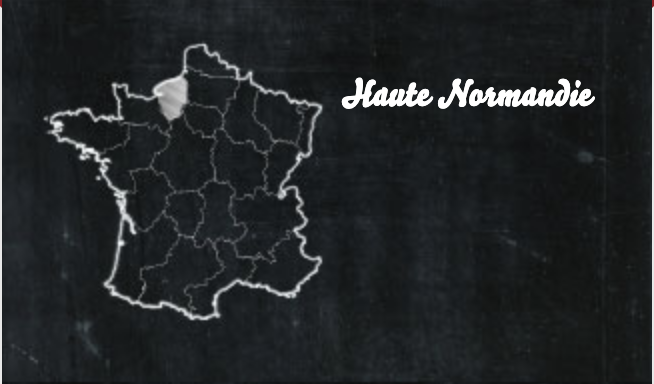Even though Parisians did not discover it until 1812 thanks to the “Almanach des gourmands” (Gourmands’ Almanac), in all likelihood, Neufchâtel is the oldest Norman cheese. Its delicious heart shape is the product of socialising between the English occupiers during the Hundred Years’ War and the girls of the region, who would offer them this cheese!
Neufchatel AOC

Origin
Characteristics
– AOC since 1969.
– Soft mould-ripened cheese.
– 45% fat content.
– It comes in several shapes: the cylindrical bung, double bung, square, brick, and heart.
– Weights vary between 100 and 600 g.
– The cheese is golden yellow in colour, soft and creamy, with a trace scent of mould. It is covered with thin, bloomy, white rind that will turn golden with ageing.
– Production: 1,100 tonnes.
Gastronomie
It’s pure, soft flavour goes perfectly with fruity red wines like Côtes-du-Rhône or a farmhouse cider. As it is very ripe, strong wines highlight its strong flavour.
Neufchâtel is the perfect ingredient for many savoury dishes and even some sweet ones if it is used when it is fresh. However, it is often very salty, so it is worth tasting before cooking with it in order to adjust seasoning accordingly.
Production
To inoculate it, bits of cheese that are already “bloomy” are added to the curd, which has sometimes already been lightly pressed. The cheese is then mixed, moulded, and salted.
Neufchâtel is considered young after 12 days of ageing, half-aged at three weeks, and aged after one to three months.
After 1870, Isidore Lefebvre, a farmer from Nesle-Hodeng, launched the era of collector-ripeners: he would go to farms that did not have good enough cellars and collect their drained cheeses to age them in his own vaulted cellars. He also developed the commercialisation of Neufchâtel, which was able to travel as far away as London.
Neufchâtel, a direct descendent of Bondon and other Angelot cheeses, is undoubtedly the oldest Norman cheese. It is mentioned in written works from the 11th century from the Sigy-en-Bray Abbey, and was recognised as one of the best French cheeses by an epicurean priest, the Abbot of Marolles, in the 18th century.
“Bung” is the term that describes the wooden cork used to stopper barrels of cider or wine and whose shape is reminiscent of that of the small cylindrical cheese.
Production Area
Its birthplace, the Pays de Bray, extends from the Seine-Maritime department and includes a village in the Oise department. It is a humid area of Haute-Normandie, oddly placed right in the middle of the chalky, dry plateau of the Pays de Caux.
Before becoming the area that supplied Paris with dairy products and cider, “Pays de Bray’s buttonhole”, so named because the region resembles a buttonhole on a map, was a huge swamp. Not until the 16th century would the swamps be drained, making way for quality pasturing and dairy production.